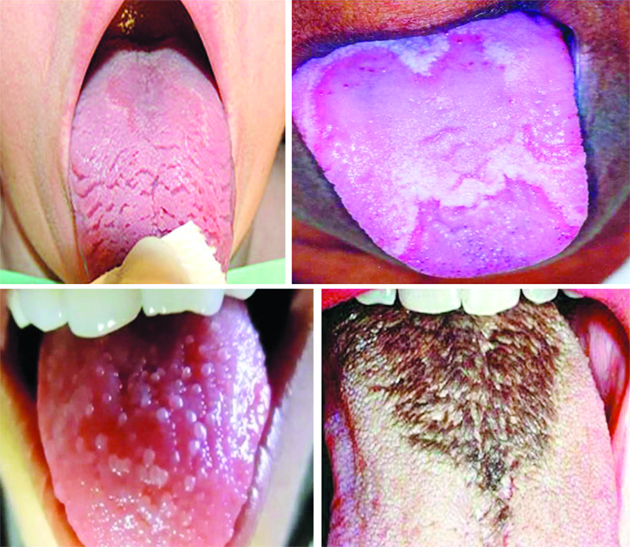Dr. Mandeep Kaur
Tongue is not just a muscle that helps you taste and swallow
food; it can also provide valuable insights into your overall dental health. Your tongue can be
a window to various oral
health issues that you might
not even be aware of. By paying attention you can potentially catch dental problems early
on and take appropriate action.
Coating or Discoloration
If your tongue appears white, yellow, or even black, it could be a sign of an underlying issue such as poor oral hygiene, dehydration, or even a fungal infection. Cleaning your tongue regularly with a tongue scraper or by gently brushing it can help remove the buildup of bacteria and debris, improving both your oral health and your breath.
Unusual Texture
If your tongue is smooth, glossy or pale, it could indicate a deficiency of vitamins or minerals like iron, folic acid, Vitamin B. Rough or bumpy tongue might be a sign of a condition called geographic tongue also related to stress, which causes irregular patches for some period of time and then undergo spontaneous regression. When these little bumps called papillae grow long making the tongue look black and hairy is called hairy tongue. It can be due to poor oral hygiene, prolonged use of antibiotics, antacid containing bismuth, smoking, drinking lots of tea and coffee. They mainly cause gagging sensation and soreness. Presence of shallow/ deep grooves and fissures known as fissured tongue is age related and also seen in Psoriasis, Down’s and Sjogren syndrome. As such asymptomatic but can lead to food and micro-organism deposit so tongue should be kept clean.
Wavy or Scalloped borders
Scalloped tongue gets its name from wavy or rippled edges that appear along the sides of a person’s tongue. It results from pressure on your tongue from grinding, clenching, or swelling that causes a scalloped indentation pattern. It may indicate a variety of issues, including dehydration, anxiety, TMJ Disorders, sleep disorders, such as bruxism, and nutritional deficiencies. Treatment will depend on the root cause of the problem.
Color Changes
Healthy tongue typically has a pinkish hue. However, if your tongue appears red or irritated, it could be a sign of inflammation or infection. Pale or bluish tongue might indicate poor circulation or even a potential blood disorder. Monitoring these color changes can help detect underlying health issues and prompt you to seek professional dental advice.
Sores or Lesions
Sores or lesions on your tongue should never be ignored. These can range from harmless canker sores to more serious conditions like oral cancer. These painful persistent sores are usually due to hypersensitivity, infection, hormones, stress, and deficiency of some vitamins. It’s crucial to have them examined by a dental professional to rule out any serious underlying problems.
White patches
Leukoplakia is a reaction to an irritant, like sharp teeth, badly fitting dentures, smoking, and smokeless tobacco. It is seen as white patches or plaques in the mouth, usually painless, and can’t be scraped off. Lacy, white linear patches on the inside of the cheeks bilaterally or tongue could be lichen planus usually and is mostly related to certain drugs, nutritional deficiency and stress. These persistent changes in your mouth need a dentist’s evaluation as it could be precancerous.
Lie bumps
Single, painful bump at the tip could be transient lingual papillitis, “lie bumps,” which can pop up if your tongue gets irritated. Virus can also cause lots of little bumps on the tip and sides. If you have a lump on or under your tongue that hurts and doesn’t go away, seek immediate consultation to rule out oral cancer.
Bright red tongue
Strawberry red tongue could be a sign of Kawasaki disease, a rare illness due to inflamed blood vessels most often in children. It could also be a symptom of scarlet fever, wegeners’ granulomatosis and deficiency of vitamin B3.
Burning sensation
If your tongue feels like you scalded it with hot coffee and taste metallic or bitter, then you may a have a burning mouth syndrome. Dry mouth, infections, acid reflux, diabetes, acidic drinks or food may cause it.
Clean your tongue, stay hydrated, eat a balanced diet, quit smoking and regular dental checkups are the tips for tongue care and overall oral health.
(The author is Assistant Professor Dept of Oral Pathology &
Microbiology Indira Gandhi Govt Dental College, Jammu)


